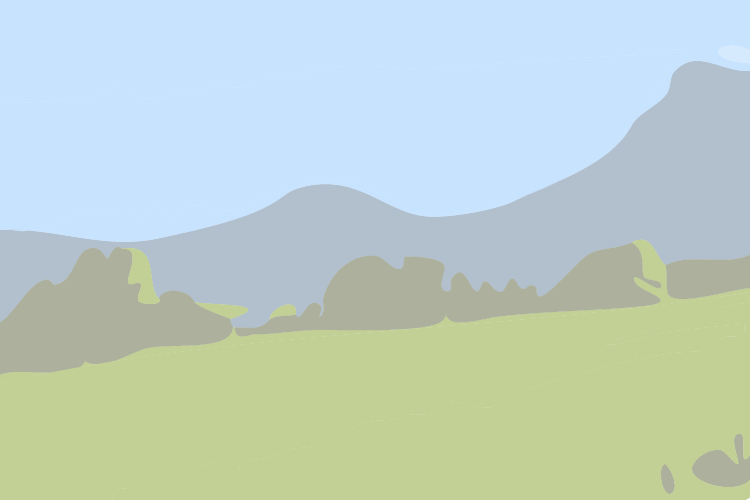
IGN Map
Get on your bike and explore Walloon Brabant and its tourist sites on two wheels!
Whether with family, friends or as a couple, enjoy some relaxing times in the great outdoors in a remarkable setting.
Stop off in a “Bikes welcome” establishment: you will not be disappointed by the welcome!




Travel back to the Middle Ages on this 2-day cycling route! From Villers-la-Ville to Braine-le-Château, get on your bike for 72km of discovery, relaxation and culinary delights!
The circuit begins in Villers-la-Ville, but thanks to the network of points-nodes, leave from where you wish.
Find the complete description of this trip on our site, and discover the secrets of the heritage of Walloon Brabant...
No signage

IGN Map

Open Street Map

As well as its impressive Abbey, Villers-la-Ville and the surrounding area are packed with unique little places, romantic walks and hidden treasures.Don’t miss the chance to learn about them and leave with even more ideas and information after popping into the tourist office opposite the entrance to the Abbey.

You can be sure of a pleasant stay in this beautiful family house in the heart of the Villers-la-Ville countryside.

Peaceful lodging in Villers-la-Ville for 6 people. This quiet guest house is nestled in a superb green setting and is part of an old and charmingly refurbished farm. The house comprises a living/dining-room wiht fire and TV, a kitchen, 2 bedrooms, 2 bathrooms, 1 shower, 4 WC, a hall, a private car park and a garden with grass, terrace and barbecue. Many walking trails can be easily accessed by visitors. Welcome in French, English, Dutch, German and Spanish.

The Tourist Office of Ittre looks forward to seeing you on the main square in the village.You can find lots of maps there showing walks or bike rides, tourist information about Ittre and the surrounding area, but most importantly lots of recommendations from the team who will tell you about the most unusual things to discover.

Entering the Marthe Donas Museum in Ittre takes you on a journey to the land of abstract art, and more specifically cubism.Set in the Chapelle des Sœurs de l’Enfant-Jésus, the museum looks back on the life and career of the artist Marthe Donas through her drawings and paintings. Originally from Antwerp, Marthe Donas (1885-1967) discovered cubism and modernism in Paris during World War I. By 1920 her work was already exhibited across Europe and she intrigued the avant-garde under the male pseudonym of Tour Donas. The collections at the Marthe Donas Museum consist of around 40 paintings by Marthe Donas, 70 works by Guillaume Vanden Borre and 40 pieces (paintings, engravings, drawings, sculptures…) by Pierre Caille.
The little brother of the Atelier du Ry Ternel, the Brasserie des Artistes serves up a different type of cuisine. Following the pure brasserie tradition, Nicolas and his team serve up the great culinary classics, but with an 'Atelier-style' twist, to delight theatregoers and others alike. Whether before or after the show, a warm welcome and affordably-priced but high-quality food are guaranteed, all with the aim of recreating that old-time spirit and ambience so dear to the loyal patrons of La Valette for over 25 years.

This former stud farm is in a beautiful agricultural setting in Ittre. You will stay in charming rooms with rural decor in the peace and quiet of the countryside.Experience a different world..

The Toursit Office of Braine-le-Château in the "Bailly House"The team is at your disposal to show you the remaining reminders of this former medieval city You will also be able to find all the tourist information you need here about the surrounding area and much more besides

Emblematic figure of Braine-le-Château in Roman Païs, known particularly for having had a pillory erected there in 1521, Maximilien de Hornes, Chamberlain of Charles V, died there in 1542. It is precisely in the Saint Remy church that you can admire his alabaster funeral statue, a unique piece surrounded by other curiosities of the region.At the entrance, you find the bell (1600 kg) from the old Romanesque church and you will discover, among its extremely colourful modern stained glass windows, an unusual depiction of King Albert I of Belgium (the Roi Chevalier, Knight King) - general commander of our armies during the First World War - as a helmeted saint. You will also recognize the family of Robiano, current owner of the castle bordering the Grand’Place.A lapidarium adjoins the church with about fifty reconstructed funerary stones, slabs and crosses. The portal of this old cemetery and that of the church are heritage-listed.

On the main square in Braine-le-Château, the stocks are a symbol of infamy, a mechanism of high justice that were used to publicly shame a criminal. This is one of the rare examples to still have its lantern structure. It is made from blue stone and has a lantern structure that can hold a standing man. It has been restored and has been the symbolic monument of the village since 1521. It is unique in Europe.See the stocks on the small walking tour of Braine-le-Château.

Do not hesitate to enter this beautiful building from the early 16th century featuring a wonderful Renaissance sandstone gable. You will be warmly welcomed by the team at the Braine-le-Château tourist office.This building used to be the residence of the bailiff who was responsible for dealing with criminal matters. These days it very often has temporary exhibitions.The Bailiff’s House also houses the Tool Centre. Tools, artefacts, old books and documents for different professions are collected here. In particular, discover an exceptional collection of music engraving tools.Discover the Bailiff’s House on the small walking tour of Braine-le-Château.

The Lapidarium, or museum of the tomb stone, built onto Saint Remy’s church, at the site of the old cemetery, presents a collection of around sixty tomb stones, headstones and funeral crosses which is unique in Wallonia.Discover the Lapidarium on the small walking tour of Braine-le-Château.

Located in the heart of Walloon Brabant, this hotel-restaurant offers high-quality service and ideal amenities for business visitors and tourists alike.The hotel offers the following packages:-Namasté package (including massage)-Keep calm and play golf Package-Have fun and thrill in Walibi Package (including entrance to the park)

Perfectly located on the Grand Place in Nivelles city centre, the hotel is close to restaurants and shops and only ten minutes’ walk from the train station. It is recently refurbished and features two studios with kitchens and four superior rooms. The hotel offers the B&B Hotels remote check-in service to make your life easier. This free service allows guests to remotely obtain the number and access code of their room on the day of arrival.

Set facing the Collegiate Church on the Grand'Place of Nivelles, this tavern with terrace offers a warm and friendly welcome. This is a temple of the Djote Tart too..! Open non-stop. Groups of +/- 100 guests welcome. Local specialities: Bière de Waterloo - Tarte Al Djote - Bière Hopus - Bière Jean de Nivelles.

The team of the Tourist Office is waiting for you and will be very happy to tell you all about Nivelles!A guided tour of the incredible Collegiate Church of Saint Gertrude, walks in the beautiful Dodaine Park, learning about the history and heritage of the town of Nivelles... and many other treasures await you!

The St. Gertrude Collegiate Church is the pride and joy of Nivelles, with its impressive 102m nave with two opposing choirs and its 11th century crypt. This is one of the largest Romanesque churches in the world, an exceptionally handsome, grandiose monument that was consecrated in 1046 by Wazon, Bishop of Liege, before Henry III Emperor of the Holy German Empire.The Collegiate Church is still in use, regularly assembling Christians from the St. Gertrude Parish.You can also visit the crypt, the archaeological basement, the cloister and the central steeple that houses the bells and carillon.The southern turret boasts the Jean de Nivelles jacquemart, a copper warrior some 2.08 m high.The Nivelles Collegiate Church is a must-see. Don't miss it!

The Simone Tower, also called the Devil’s Tower and located close to the collegiate church Sainte-Gertrude of Nivelles, was for many years the premises of the League of Crossbowmen (Serment des arbalétriers), one of the civilian bodies charged with defending the ramparts of the city. Renovated in 2006, this tower is now the last testimony to the medieval walls which were constructed in the 12th century. There were no fewer than eleven towers and seven portcullis gates. The rampart was composed of a mighty fortification 2.50 m thick, surrounded by partially flooded moats outside, and reinforced with 8 m-wide embankments inside. In the tower, the guardroom, vaulted and pierced by arrow-loops, now houses a 3 dimensional map of the city of Nivelles as it looked around 1600, defended by the rampart and its moats. The tower is now accessible as part of a guided visit of the city of Nivelles.

Saved from the destructive wrath of German bombings in May 1940, this old quarter in the heart of the city of Nivelles, lovingly "taken over" by those who treasure the structures steeped in history of their city, offers the visitor an unexpected getaway in Walloon Brabant.At the South-West of the Grand’Place and the collegiate church Sainte-Gertrude of Nivelles, the Saint-Jacques neighbourhood remained intact. Its winding cobblestoned lanes will plunge you into a timeless atmosphere. It owes its name to the hotels, hospice, and churches, now gone, that accommodated, in particular, pilgrims en route for Compostela. We also have to mention the 16th-century Renaissance ‘Sainte-Gertrude’ house, with its façade built of dressed stone, and the old ‘Grange Bayard’, an impressive residence in Regency style (18th-century) at the corner of the Rue du Coq.A bit further on, in the Rue de Charleroi, near the Church of the Récollets, the house of the last bailiff of the abbess of Nivelles, a robust but elegant residence with two beautiful 18th-century Classical facades, faces the former episcopal seminary (1608).The former Hôtel du Baron de Taye in the Rue de la Religion, the former refuges of the Abbey of Aywières and the Knights of Malta, the private mansions in the Rue Saint-Georges or the house with the cannonballs embedded in the façade in the Rue du Pont Gotissart are all worth a detour.Within a stone’s throw of the collegiate church of Nivelles, the old fortified tower from the town walls, the Simone Tower (or Devil’s Tower) dates from the 12th century. However, the structure called "La Tourette", dating from the beginning of the 17th century is an elegant building in Renaissance style which was erected by the abbess Marguerite de Haynin, who used it as a country house.Outside this urban area, impressive buildings evoke the rural dependencies of Nivelles: the Ferme du Chapitre in Baulers, the Ferme de l’Abbaye in Monstreux or the Ferme and the Château de la Tournette, splendid 18th/19th-century set.

Enjoy the superb environment as you relax with your family.The park was fitted out at the beginning of the 19th century. A French garden, two ponds, an English garden and flowerbeds stand between the walkways.As you stroll through, admire the magnificent sculptures by Albert Desenfans, Ducaju and Michiels. Don't miss the grimacing neo-Gothic gargoyles or the 17th century Baroque gate recovered from the St. Gertrude Collegiate Church.At the bottom of the garden, sports and leisure facilities are available. The Reine Astrid sports field and a large multipurpose gym await football, hockey, tennis, basketball and track teams.The listed estate has two styles of garden, French and English. There is a fountain and a lake of several hectares where fishing is permitted between April and December.

Villers-la-Vigne is the vineyard of Villers-la-Ville abbey. Restored during the 1990s, it is formed by a plain and four south-facing terraces, nestled in the middle of a field surrounded by stone walls hundreds of years old. The Villers-la-Vigne® appellation comprises four products, all from different terroirs and made using different vinification techniques. Enjoy savouring the Villers-la-Vigne® white, Villers-la-Vigne® red, Mistelle de Villers-la-Vigne® white and Marc de Villers-la-Vigne® .

The restored microbrewery of the Abbey of Villers-la-Ville is installed in the former wash-house and honours this drink very much appreciated by the monks.New beers are being proposed as well as those brewed by the Confrérie des Hostieux Moines of the Abbey of Villers.

The restaurant La Brasserie de Rigenée in the Rigenée Golf Club inVillers-la-Ville is open to golfers and the general public. You can enjoy a meal with your family, friends or business colleagues in a friendly atmosphere. The terrace overlooking the 18th hole is a real haven of peace. Seasonal menu, lunch and other suggestions available.

Le Chalet de la Forêt, a stone’s throw from Villers-la-Ville Abbey, offers brasserie food and snacks. With a huge terrace and a kitchen open for lunch and dinner, this is an essential stop before or after visiting the abbey. This Villers-la-Ville institution was built in 1898 for the quarry workers and fully renovated in 2015.

Exceptional listed Walloon heritage, the Villers-la-Ville Cistercian Abbey is remarkably preserved since the 12th century!Explore its reception-shop area with a wide choice of local products, its interpretive centre and its tour itinerary. Get a panoramic 180° view of all the Abbey.The 8 beautiful gardens in very different styles are also to be admired. The Physic Garden is filled with all sorts of plants used in everyday life in the Middle Ages while the Monks’ Garden and Pharmacy Garden present medicinal plants past and present. The Abbey Garden, the Garden of Scents with its Meditative Path, and the timeline of old garden rosebushes form the three ornamental gardens. Two fruit gardens complete this set, the conservation and experimental orchard and the port of Brussels orchard.With the family of friends, explore Villers-la-Ville Abbey, its architecture, its history, its gardens and its animals!

